Stanley Kubrick: Τρόμος, φουτουρισμός και το νόημα του design
DS.WRITER:
Christina Ioakeimidou
2001: A Space Odyssey (1968) | Πηγή εικόνας: lawcreative.co.uk
Stanley Kubrick. Αναμφισβήτητα ένας από τους σημαντικότερους σκηνοθέτες όλων των εποχών. Έχοντας στο ενεργητικό του πάνω από 16 ταινίες, ο Kubrick έθεσε τα θεμέλια για μία τομή στην κινηματογραφική νόηση και τον τρόπο αντίληψης του κόσμου, που γεννιέται στη μεγάλη οθόνη. Η καλλιτεχνική του οπτική γωνία δεν επηρέασε μόνο τη δημιουργία ενός κινηματογραφικού κόσμου, αλλά ήταν σημείο τομής στη δημιουργία ενός περίπλοκου εσωτερισμού, ο οποίος αντανακλάται και στο σινεματικό setting. Και το ερώτημα που προκύπτει είναι το εξής: πώς το design που επιλέχθηκε για τη σκηνογραφία επηρεάζει και ταυτόχρονα επηρεάζεται από την πλοκή;
Πιστεύουμε πως θα ήταν προτιμότερο, αν αυτό προσπαθούσαμε να το απαντήσουμε βάσει των τριών γνωστότερων ταινιών του μεγάλου σκηνοθέτη.
Από το κινηματογραφικό μέλλον στο παρόν του design
Ο Αμερικανός σκηνοθέτης στις ταινίες του δεν περιοριζόταν μόνο στη στείρα απόδοση της πλοκής. Δημιουργώντας ολόκληρους κόσμους, στόχευε στην απόδοση μιας ουτοπικά ρεαλιστικής πραγματικότητας, η οποία πολλές φορές είχε ως χώρο αναφοράς το μέλλον.
Για παράδειγμα, στην ταινία 2001: A Space Odyssey, ο προφητικός λόγος του Kubrick παίρνει σάρκα και οστά, αφού ό,τι θεωρούσε το κοινό επιστημονική φαντασία το μακρινό 1968, γίνεται πραγματικότητα στον 21ο αιώνα. Φυσικά, η αληθοφάνεια πίσω από το περίεργο σενάριο και τα κοστούμια, οφείλεται στον μοναδικό τρόπο απόδοσης των εσωτερικών χώρων και των αντικειμένων που αναπτύσσονται μέσω της φουτουριστικής σκηνογραφίας.
Ο Kubrick, με τη βοήθεια του κινηματογραφιστή Geoffrey Unsworth και του art director John Hoesli, κατόρθωσε να δημιουργήσει ένα καθόλα αληθινό διαστημικό σκηνικό, που περιελάμβανε τεχνολογικά επιτεύγματα που σήμερα είναι μέρος της καθημερινότητάς μας, όπως φορητούς υπολογιστές, κινητά κτλ., όπως αναφέρει και ο P. Bizony: «The executive briefcase with its phone handset and dial? Look closely, and all the elements of the laptop or smartphone are there, half a century ahead of time».
Ωστόσο, η καινοτόμα προσέγγιση του σκηνοθέτη στη δομή του design δεν έμεινε εκεί, καθώς για την πειστικότερη απόδοση των διαστημικών αυτών χώρων, στράφηκε σε astronomical artists και σε ειδικούς αεροναυπηγικής και σχεδιαστικής παραγωγής, αποσκοπώντας στο όσο το δυνατόν καλύτερο οπτικά αποτέλεσμα.
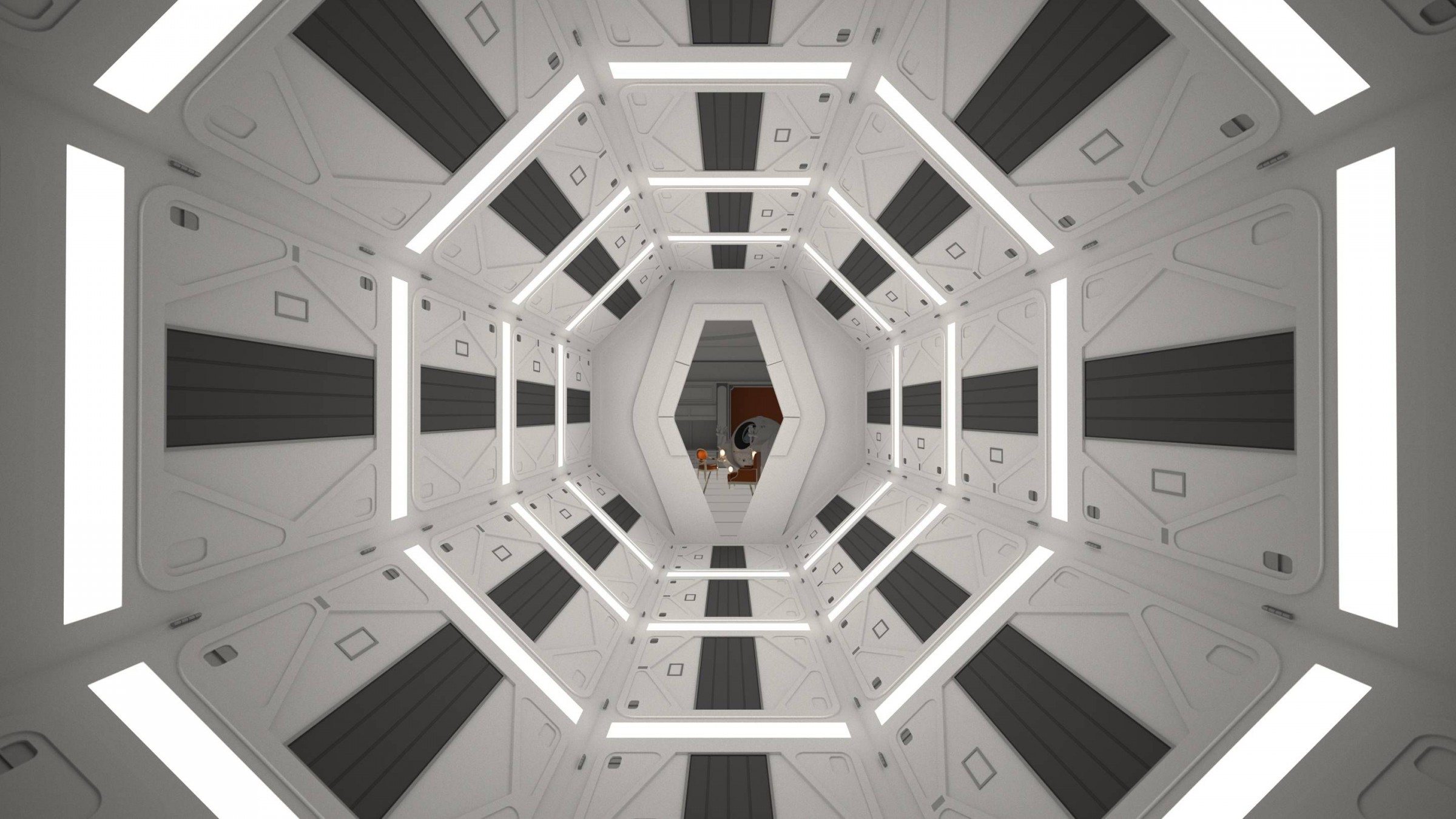
2001: A Space Odyssey (1968) | Πηγή εικόνας: i.pinimg.com
Ενδιαφέρον, επίσης, παρουσιάζει ο τρόπος σχεδιασμού των επίπλων της ταινίας. Οι χαρακτηριστικές έντονα κόκκινες Djinn chairs ή "Low fireside chair" (έτος κατασκευής: 1964) -έργο του Γάλλου industrial designer Olivier Mourgue- όχι μόνο κατάφεραν να ενταχθούν άρτια στο setting της ταινίας, αλλά της προσέδωσαν και τον συμβολισμό που ήδη έφεραν. Και ο λόγος ήταν ότι οι ίδιες παραπέμπουν σε έναν ανατολίτικο μυστικισμό -πολύ δημοφιλή την εποχή εκείνη- που έχει τις ρίζες του στο Ισλάμ. Επιπλέον, η ονομασία Djinn*, προερχόμενη από τη λέξη Jiin, ανάγει το ίδιο το αντικείμενο σε ένα διαρκώς μεταβαλλόμενο προϊόν. Αυτό γίνεται αντιληπτό από το ιδιαίτερο σχήμα της καρέκλας και από το χαμηλό της προφίλ, ενώ γενικότερα η κατασκευή της προσπαθεί να μιμηθεί τον άτυπο τρόπο ζωής των μέσων του ’60.
*Η λέξη είναι αραβικής προέλευσης. Η σημασία της λέξης ‘’Jinn’’ μπορεί να ταυτιστεί με τα ρήματα «κρύβομαι» ή «προσαρμόζομαι», ενώ ως όρος Jinn (ή Genie) χρησιμοποιείται για τα δαιμονικά πλάσματα που αναφέρονται στην αραβική προ-Ισλαμική θρησκεία. Αυτή η προσαρμοστικότητα των Τζίνι (Genies) αποτέλεσε την αφορμή για την κατασκευή των Djinn chairs, αφού το σχέδιό τους προσδίδει στο τελικό αποτέλεσμα μία αίσθηση ρευστότητας.
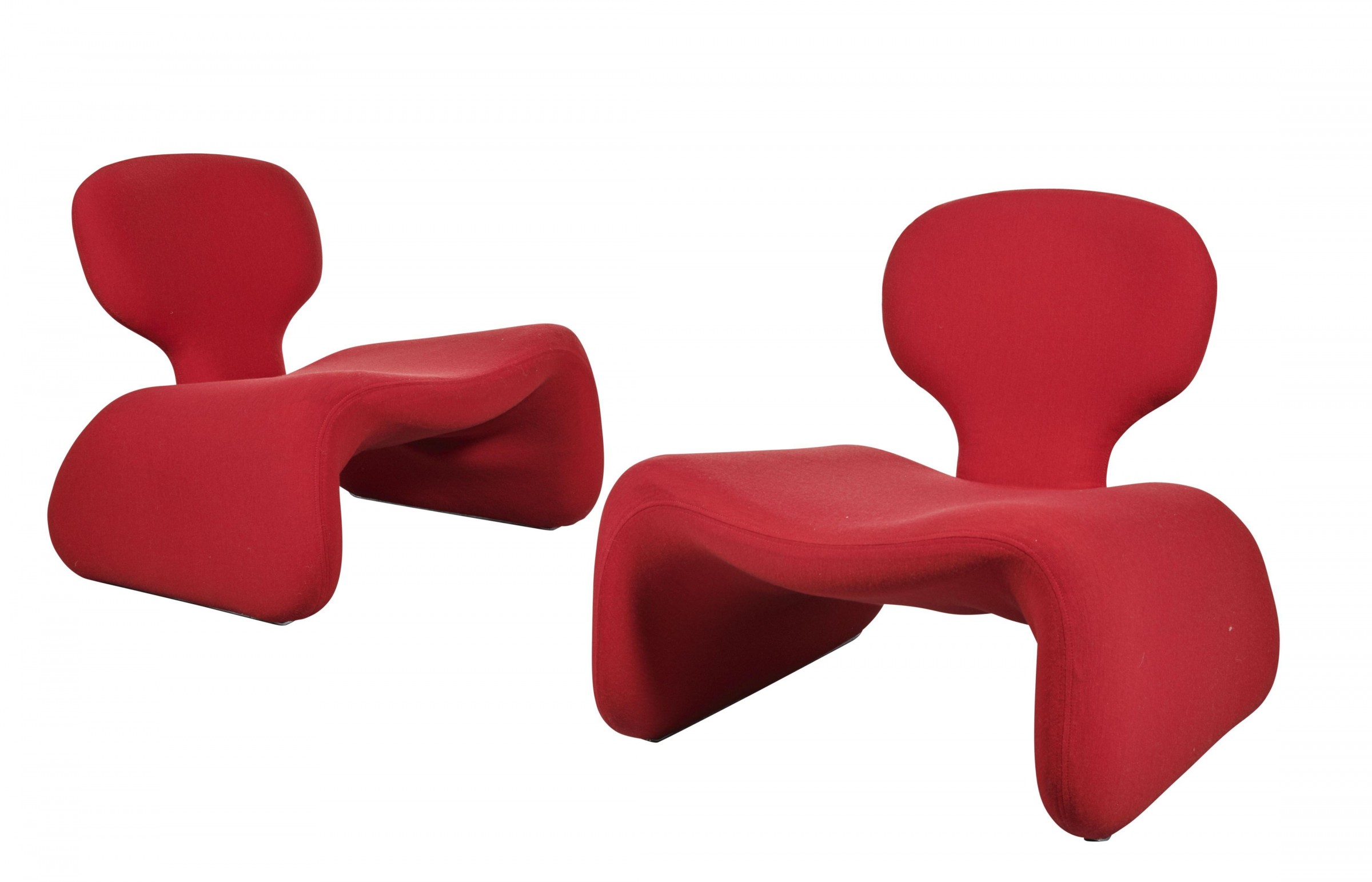
Οι Djinn chairs από τη ταινία 2001: A Space Odyssey | Πηγή: image.invaluable.com
Όμως, η συγκεκριμένη ταινία δεν ήταν η μοναδική στην οποία η επίπλωση είχε μία ιδιάζουσα σημασία. Μήπως τελικά το design αντιμετωπίστηκε δεξιοτεχνικά και άκρως διαφορετικά από τον Kubrick, ανάλογα με το είδος του κινηματογραφικού εγχειρήματος;
Θυμός, βία και μία κριτική της βρετανικής μοντέρνας κουλτούρας
Το Α Clockwork Orange (1971) είναι ίσως η πιο σοκαριστική ταινία του Kubrick, και συνάμα αυτή που προκάλεσε τον μεγαλύτερο σάλο και επιρροή στη μοντέρνα, κατά τα άλλα, κοινωνία των ‘70s. Αν και η δεκαετία του 1970 αποτέλεσε κοιτίδα και αφετηρία μιας σύγχρονης, πιο απελευθερωμένης καλλιτεχνικής, κοινωνικής και σεξουαλικής έκφρασης, στιγματίστηκε από την αναζωπύρωση των μεγάλων πολέμων, τη ραγδαία αλλαγή του τρόπου ζωής και την κοινωνική βιαιότητα. Ο Robert Christgau, στο βιβλίο του Christgau's Record Guide (1981), μας δίνει μία εξαιρετική περιγραφή, λέγοντας: «The decade is of course an arbitrary schema itself—time doesn't just execute a neat turn toward the future every ten years. But like a lot of artificial concepts—money, say—the category does take on a reality of its own once people figure out how to put it to work. 'The '60s are over,' a slogan one only began to hear in 1972 or so, mobilized all those eager to believe that idealism had become passe, and once they were mobilized, it had. In popular music, embracing the '70s meant both an elitist withdrawal from the messy concert and counterculture scene and a profiteering pursuit of the lowest common denominator in FM radio and album rock.».
Συνεπώς, δεν θα μπορούσε ο Kubrick να παραγκωνίσει από την καλλιτεχνική του δημιουργία τον κόσμο που άλλαζε. Αγνοώντας τα κοινωνικά ταμπού της βρετανικής κοινωνίας, το A Clockwork Orange έρχεται να απαντήσει στο ερώτημα σχετικά με τον σωστότερο τρόπο καταστολής της βίας, και τη συσχέτιση που αυτή μπορεί να έχει με την ατομική ελευθερία και τις επιπτώσεις τής κεντρικά οργανωμένης εξάλειψης της βίας στον άνθρωπο. Έτσι, τοποθετώντας την πλοκή στο μέλλον -όχι, όμως, αυτή τη φορά σε ένα φουτουριστικό διάστημα-, η σουρεαλιστικά αποδοσμένη αυτή ταινία προβάλλει τη ζωή της ανήσυχης νεολαίας, που ψάχνει ίσως να βρει μια ταυτότητα ή να εδραιώσει τη θέση της, αντιτιθέμενη στην προηγούμενη γενιά.

A Clockwork Orange (1971) | Πηγή εικόνας: artdependence.com
Όπως είναι επόμενο, το design ακολουθούσε και μιμούνταν αυτό τον σουρεαλισμό, επιτείνοντας τη βία, σε σκηνές όμως που αυτή δεν είναι ορατή. Με Production designer τον John Barry, το stage design της ταινίας στήθηκε με σκοπό να προσδώσει αυτή την παράλληλη αφήγηση, ανάγοντας τα αντικείμενα σε σύμβολα. Ξεκινώντας από την πολυκατοικία-σπίτι του πρωταγωνιστή, Alex (Malcolm McDowell), το απόκοσμο, άκαμπτο στοιχείο του εξωτερικού σχεδιασμού αντανακλά τον εσωτερικό κόσμο του ίδιου. Στην πραγματικότητα, το σύμπλεγμα σπιτιών, αν ιδωθεί μεμονωμένα, φαντάζει τελείως κενό, ακατοίκητο, δίνοντας την εντύπωση στον θεατή ότι ίσως να έχει κατασκευαστεί πριν την ανάπτυξη του ανθρώπινου πολιτισμού, παραπέμποντας ίσως στην άκρατη ή κοινωνικά απρόσωπη βιαιότητα.
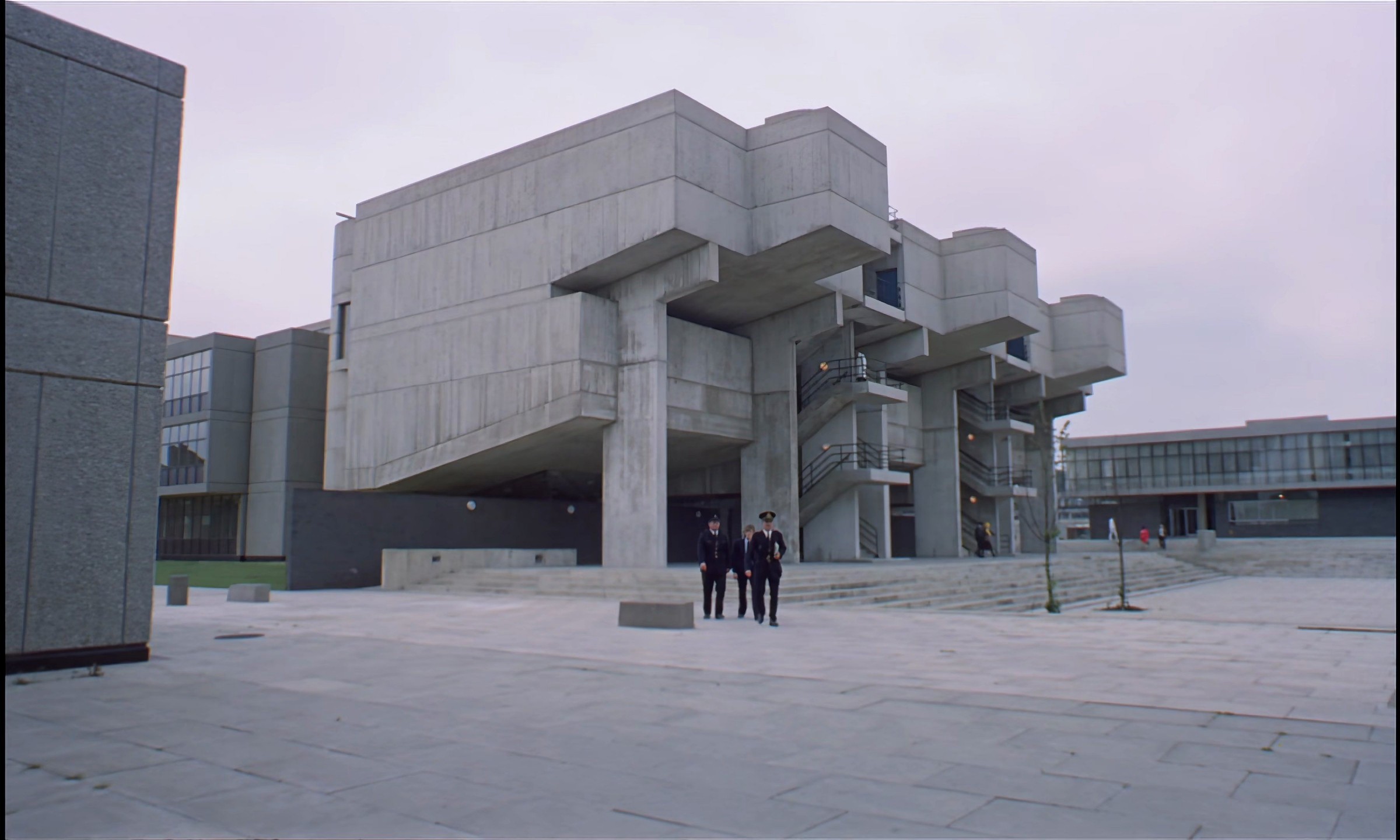
Πηγή εικόνας: pbs.twimg.com
Παρ’ όλ’ αυτά, περνώντας στο εσωτερικό οι χώροι αλλάζουν, αποκτούν χρώμα και μία μοντέρνα διακοσμητικότητα, η οποία, αν και κινείται στα χρώματα των ρούχων της συμμορίας (επικράτηση του λευκού), δεν χάνει την παιχνιδιάρική της διάθεση. Παράδειγμα της αληθοφάνειας του εσωτερικού design των σπιτιών, είναι αυτό στο Mr and Mrs Alexander’s House, το οποίο θεωρείται αντίγραφο του σχεδίου του 1965-1966, της Team 4. Η επιλογή του Kubrick δεν είναι ούτε αυτή τη φορά τυχαία, αφού ακριβώς αυτό το ρεαλιστικό στοιχείο του σπιτιού καθιστά την ταινία περισσότερο σοκαριστική, καθώς αυτή φαίνεται να δρα σε ένα κοινωνικό τώρα, χωρίς να αποκόπτεται καθόλου από αυτό.
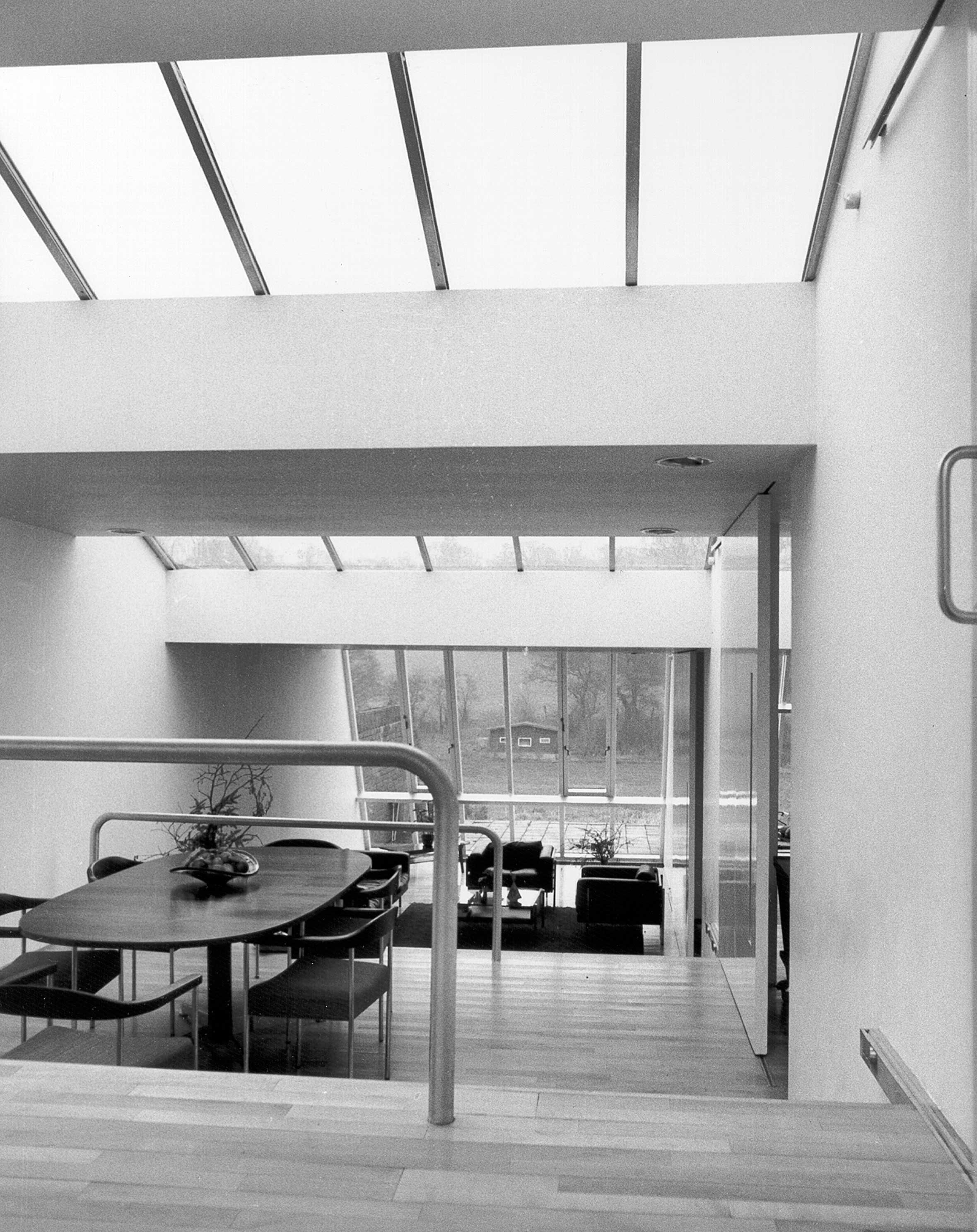
Το σπίτι Skybreak, στο Radlett, Hertfordshire (Team 4, 1965-1966) | Πηγή εικόνας: i.pinimg.com
Αποκορύφωμα της σύνδεσης του setting design με την πλοκή και το βαθύτερο νόημα της ταινίας, αποτελεί το εξαιρετικά κιτς εσωτερικό τού Korova Milk Bar. Εδώ, οι έντονες χρωματικές αντιθέσεις του μαύρου και λευκού, τα προκλητικά έπιπλα που μιμούνται γλυπτά, και οι σχεδόν ακίνητες μορφές των χαρακτήρων, δημιουργούν την αίσθηση της ύπαρξης μιας μελλοντικής υποκουλτούρας, ταυτίζοντας τους πρωταγωνιστές με «αγάλματα» τοποθετημένα μέσα σε αυτή την παράλληλα δοσμένη υποκουλτούρα.
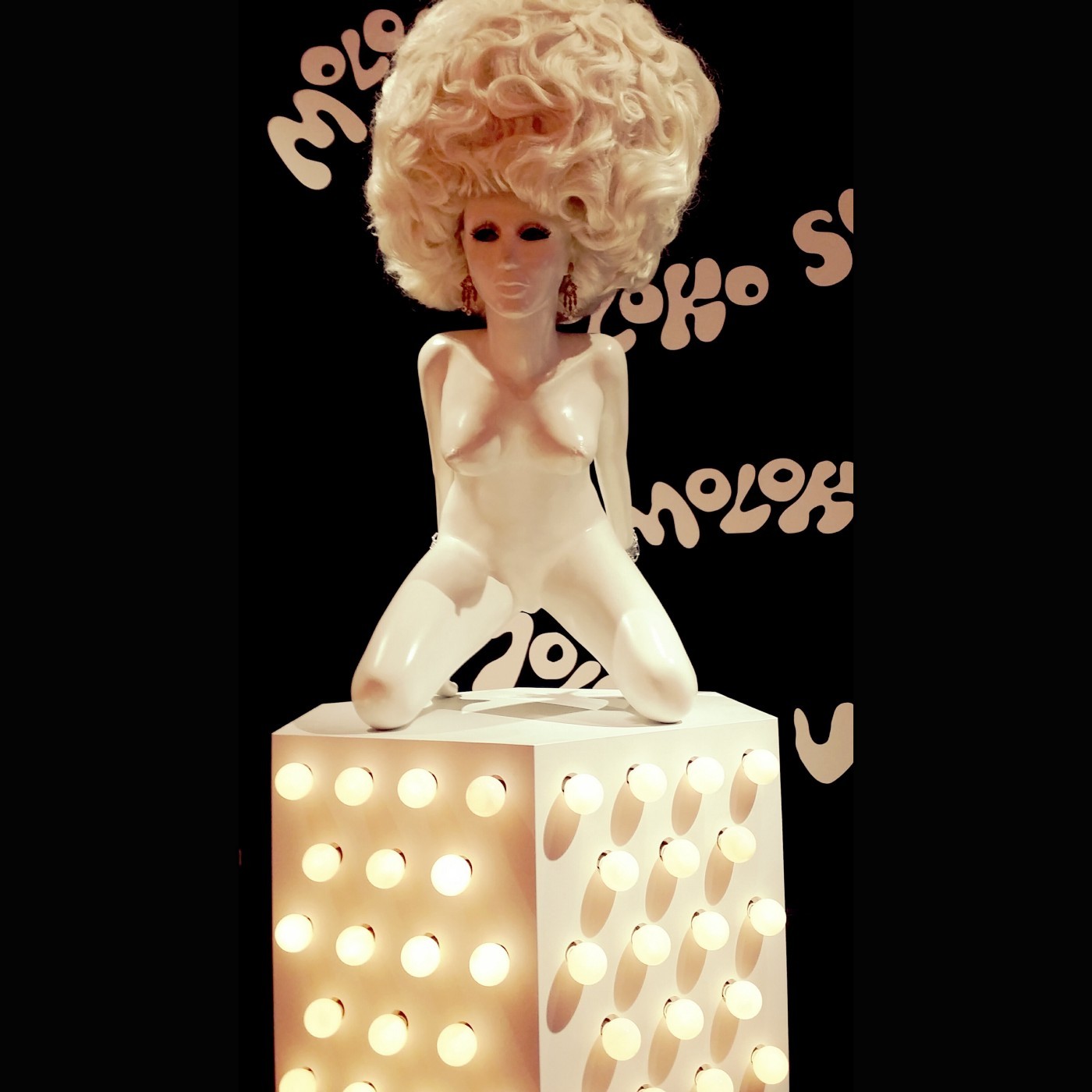
Πηγή εικόνας: medium.com
Όμως, όπως και στο 2001: A Space Odyssey, έτσι και στη συγκεκριμένη ταινία, τα περίεργα έπιπλα έχουν εμπνευστεί από προϋπάρχοντα αντικείμενα. Στην περίπτωση, μάλιστα, του Korova Milk Bar, οι γυναικείες γυμνές φιγούρες μάς παραπέμπουν στη δουλειά του Allen Jones και συγκεκριμένα στη σεξιστική, με τα σύγχρονα μάτια, σειρά επίπλων του 1969. Με γνωστότερο αντικείμενο της σειράς την Allen Jones Chair, η σύνδεση μεταξύ της ταινίας -και κυρίως των βίαιων σκηνών της με θύματα γυναίκες- και των γλυπτών επίπλων του Jones είναι εμφανής. Επιπλέον, η αντικειμενοποίηση των ανθρώπων, στον κινηματογραφικό κόσμο του Alex και της συμμορίας που αυτός ηγείται, είναι ένας έκδηλος υπαινιγμός του τρόπου που ο ίδιος ο πρωταγωνιστής βλέπει τη γυναίκα, περιφρονώντας την, πατώντας επάνω της, τόσο κυριολεκτικά όσο και μεταφορικά.
Η «Λάμψη» ενός χαλιού;
Έχοντας περάσει από την επιστημονική φαντασία, στο γκανγκστερικά σουρεαλιστικό παρόν-μέλλον, το The Shining (1980) είναι ίσως ένα κράμα των προηγούμενων ταινιών του Stanley Kubrick. Σχεδόν δέκα χρόνια μετά τη δυστοπική πλοκή του A Clockwork Orange, το The Shining ακροβατεί ανάμεσα στο θρίλερ και το υπερφυσικό, καθιστώντας την ταινία σημείο αναφοράς των ταινιών του είδους. Αν και αρχικά δεν είχε λάβει και τις καλύτερες των κριτικών, αφού είχε προταθεί και για το βραβείο των Χρυσών Βατόμουρων, εντούτοις, με το πέρασμα του χρόνου και με μία αναλυτικότερη κριτική ματιά, το θρίλερ του Kubrick είναι άκρως συναρπαστικό και περίπλοκο, δηλαδή όπως ακριβώς και οι προηγούμενες κινηματογραφικές του δουλειές.
Αυτή τη φορά με βασικότερο πρωταγωνιστή ένα στοιχειωμένο ξενοδοχείο στο Κολοράντο, η πλοκή της ταινίας ξετυλίγεται κάπως κλειστοφοβικά, αφού οι χαρακτήρες βρίσκονται σχεδόν παγιδευμένοι στο εσωτερικό του. Με αυτό τον τρόπο, ο σχεδιασμός του setting του εσωτερικού χώρου έπρεπε να επιμεληθεί λεπτομερώς, για να εκτελέσει την αποστολή της συμβολικής χρήσης των αντικειμένων και της αποτύπωσης του ψυχισμού των πρωταγωνιστών στον χώρο. Πώς; Πρωτίστως με τη χρήση ενός ή περισσότερων χαλιών και ταπετσαριών με επαναλαμβανόμενα μοτίβα, τα οποία καλύπτουν το σύνολο των επιδαπέδιων και επιτοίχιων επιφανειών.
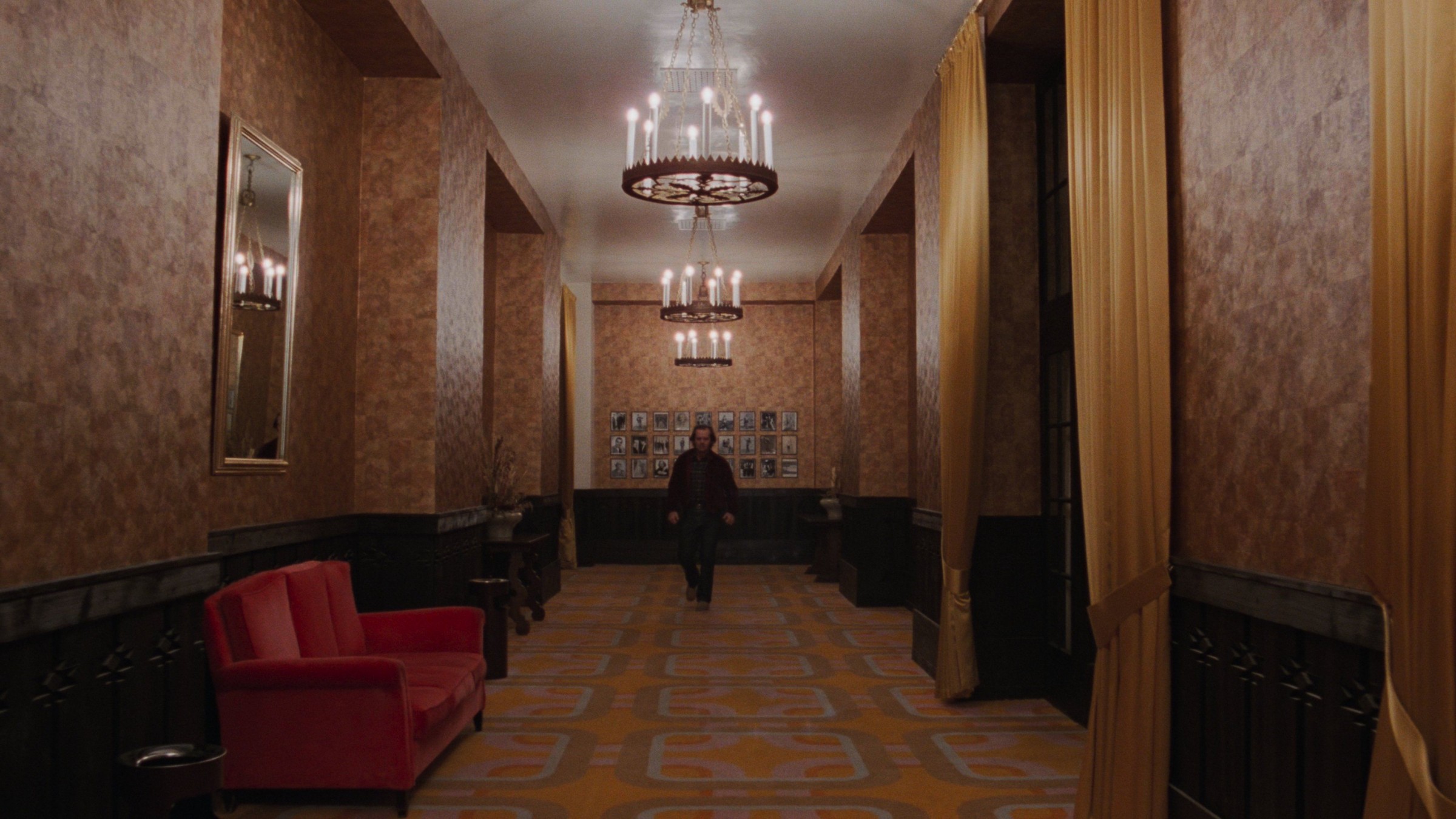
Πηγή εικόνας: pbs.twimg.com
Το αίσθημα εγκλεισμού επιτείνεται από τα συνεχόμενα μοτίβα -πιθανή μίμηση της δουλειάς του David Hicks- που δεν αφήνουν οπτικό περιθώριο στον θεατή, οδηγώντας το βλέμμα του όλο και βαθύτερα στο ξενοδοχείο, το οποίο φαίνεται να έχει καταπιεί την όποια μορφή ζωής. Επιπλέον, ο Kubrick, με τη χρήση των έντονων -αντιθετικών πολλές φορές- χρωμάτων, καταφέρνει να επιβάλει, κατά κάποιον τρόπο, μια ψευδαίσθηση της αβεβαιότητας και αστάθειας του χώρου, που μπορεί να κινείται στο μεταίχμιο πραγματικότητας και φαντασίας. Αυτό επιβεβαιώνει και ο λαβύρινθος, τον οποίο κοιτά ο Τζακ Τόρανς (Τζακ Νίκολσον) που μιμείται τα διάφορα και παράξενα μοτίβα του διακόσμου. Τέλος, το περίφημο εξαγωνικό χαλί -αρχικό σχέδιο του Hicks- πάνω στο οποίο κινείται ο μικρός Ντάνι (Ντάνυ Λόυντ), ίσως να αποδίδει διαφορετικά νοήματα στις σκηνές της ταινίας, όπως το συνεχές του χώρου, αφού τα μοτίβα δεν τελειώνουν ποτέ, επεκτεινόμενα απλώς στους διαδρόμους του ξενοδοχείου. Ωστόσο, το αίσθημα του τρόμου, λόγω των υπερβολικών χρωμάτων και του «ασφυκτικού» σχεδίου, είναι πανταχού παρόν, αφού, για πολλούς, το ίδιο το σχήμα των εξαγωνικών ρόμβων μπορεί να παραπέμψει στο μεταφυσικό κακό που κυριαρχεί στον χώρο.
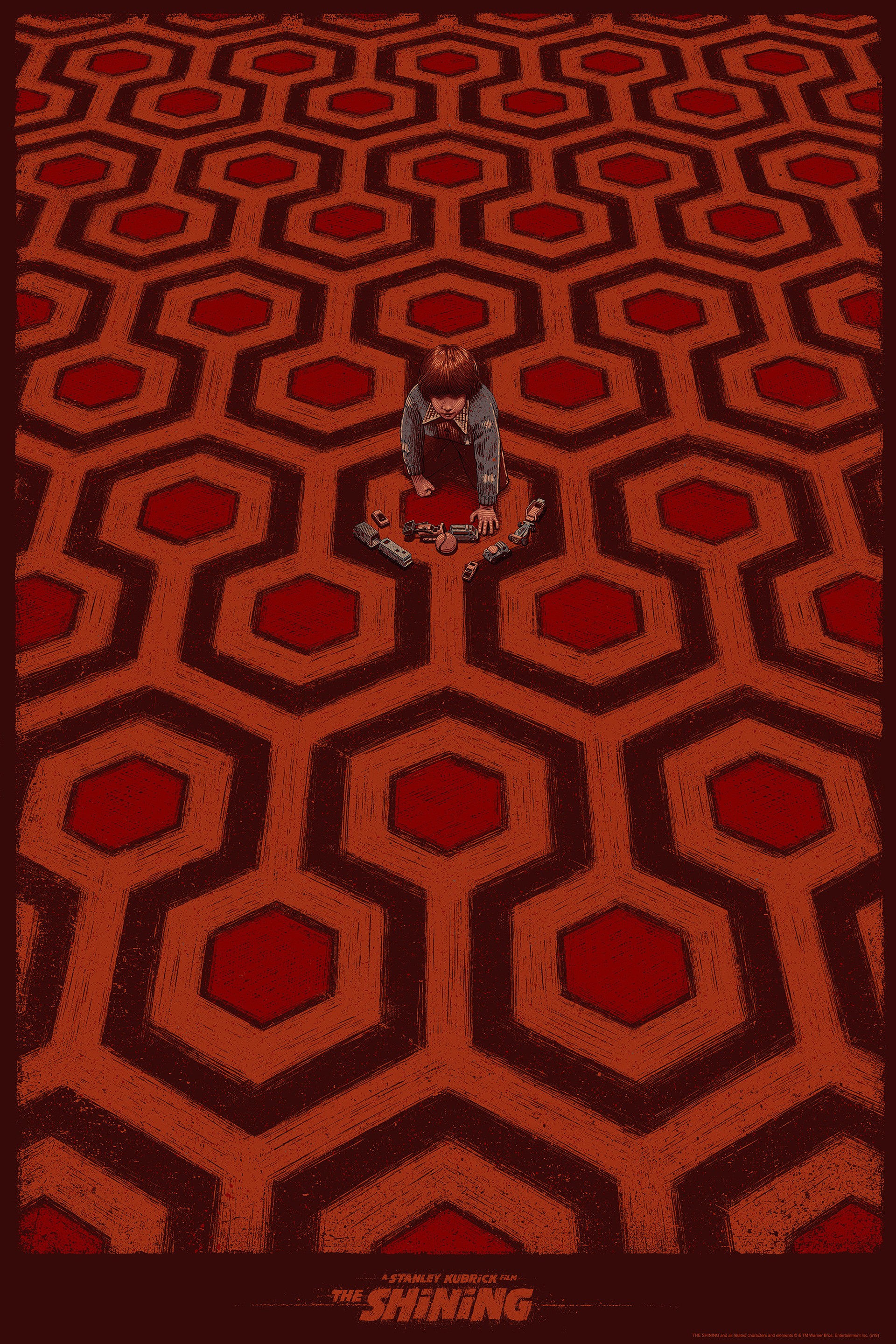
"The Shining" (Bartosz Kosowski) | Πηγή εικόνας: bartoszkosowski.com
Τέλος, η σκηνή με το παιδί να κάθεται ακριβώς στη μέση του κινηματογραφικού κάδρου, πάνω σε ένα από τα εξάγωνα, ίσως να είναι και η σημαντικότερη της ταινίας, οδηγώντας στην ερμηνεία του χαλιού ως μιας συνεχόμενης σκακιέρας, τα πιόνια της οποίας είναι τα εγκλωβισμένα, σε αυτήν, άτομα. Έτσι, κάνοντας μια κίνηση, ο καθένας απομακρύνεται ή πλησιάζει το άγνωστο.
Όμως, το ίδιο νοητικό μοτίβο δεν ακολουθείται και στην επιλογή των επίπλων, αφού αυτά αλλάζουν σχέδια και χρώματα σε κάθε δωμάτιο του Overlook Hotel, ταυτίζοντας ίσως την αβεβαιότητα της επίπλωσης με αυτή της πλοκής. Συνεπώς, κανένα δωμάτιο δεν είναι το ίδιο οπτικά και σεναριακά, καθώς το καθένα ενδεχομένως να «κρύβει» τον ξαφνικό τρόμο.
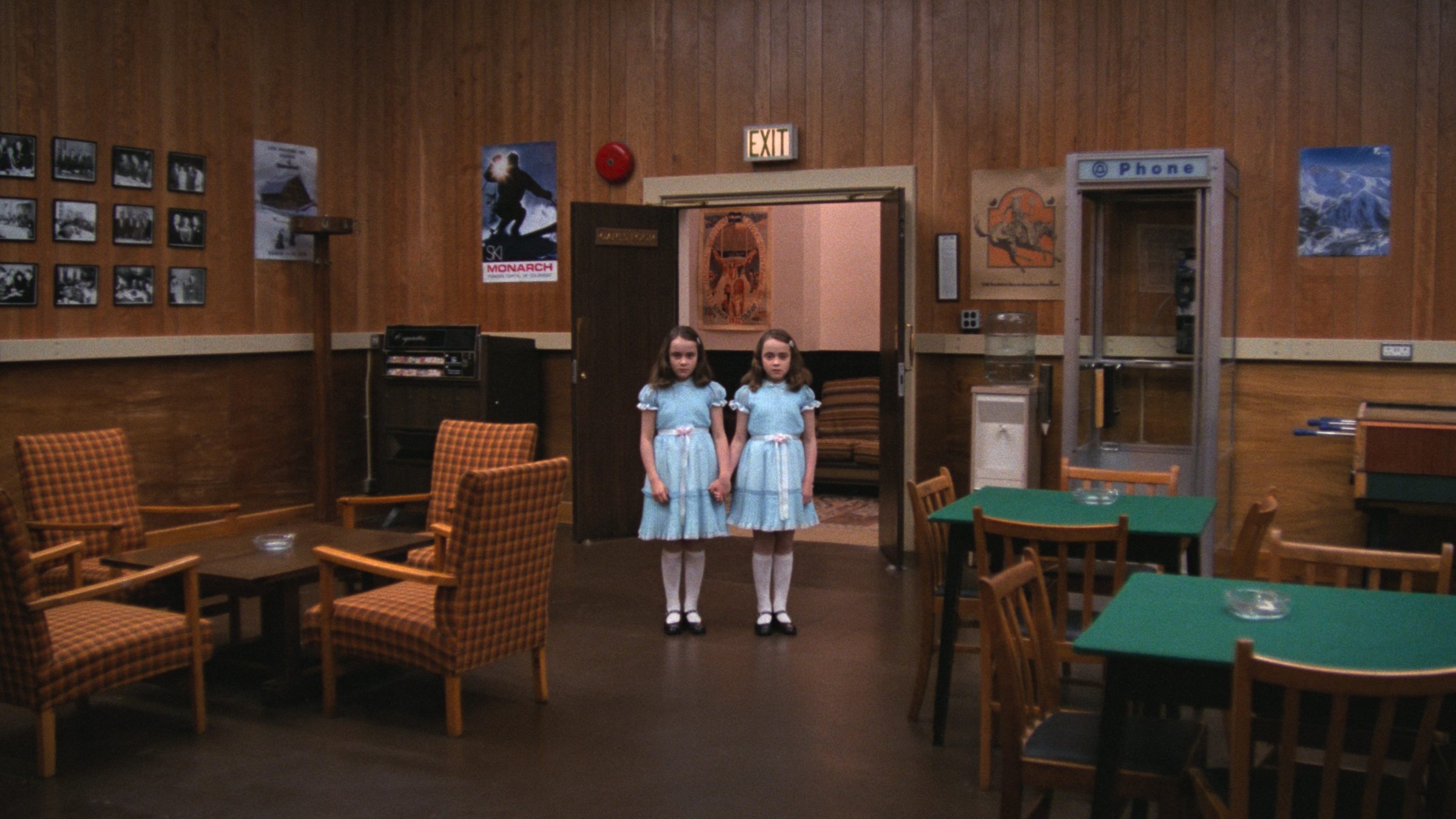
Πηγή εικόνας: slow.pics
Κάτι περισσότερο από έπιπλα
Λαμβάνοντας υπόψη τη σπουδαιότητα των επίπλων στο κινηματογραφικό setting, μπορούμε να καταλάβουμε τη διαφορετική σημασία που έχουν τα διακοσμητικά αντικείμενα και έπιπλα στην καθημερινότητά μας. Άλλωστε, ο κινηματογραφικός ρεαλισμός (Cinematic realism) που με κάποιον τρόπο πάντα θα επιτυγχάνεται, γίνεται και το μέσο απόδοσης νοήματος και εικόνας σε πολλά στοιχεία της ζωής, τα οποία διαφορετικά θα αγνοούνταν. Έτσι, ένα μοτίβο, ένα συγκεκριμένο έπιπλο ή κτίριο, είναι ικανά να μας ξυπνήσουν μνήμες και συναισθήματα, τα οποία διαφορετικά, με την απουσία της εικόνας, δεν θα γίνονταν αντιληπτά. Εξάλλου, δεν είναι τυχαίο το γεγονός ότι ο ίδιος ο Stanley Kubrick οπτικοποιούσε, μέσω των ταινιών του, μυθιστορήματα, καθιστώντας την εικόνα ενός τόπου ή αντικειμένου σύμβολο πολλαπλών συναισθημάτων.
Περαιτέρω ανάγνωση/Πηγές
J. Jones, Stanley Kubrick and me: designing the poster for A Clockwork Orange (2016). Από: https://www.theguardian.com/artanddesign/2016/jul/07/stanley-kubrick-and-me-designing-clockwork-orange-poster.
M. Rhodes, The Amazingly Accurate Futurism of 2001: A Space Odysse (2015). Από: https://www.wired.com/2015/08/amazingly-accurate-futurism-2001-space-odyssey/.
A Clockwork Orange (1971). Από: https://www.intjournal.com/0614/a-clockwork-orange.
Z. Williams, Is Allen Jones’s sculpture the most sexist art ever? (2014). Από: https://www.theguardian.com/artanddesign/2014/nov/10/allen-jones-sexist-art-royal-academy-review.
Kappelhoff, Hermann. The Politics and Poetics of Cinematic Realism. Columbia University Press, 2015. University Press Scholarship Online, 2016. doi: 10.7312/columbia/9780231170727.001.0001.
Collative Learning. Optical illusion sets in THE SHINING (film analysis). Από: https://www.youtube.com/watch?v=1QVto3EZ1Fc&ab_channel=CollativeLearning




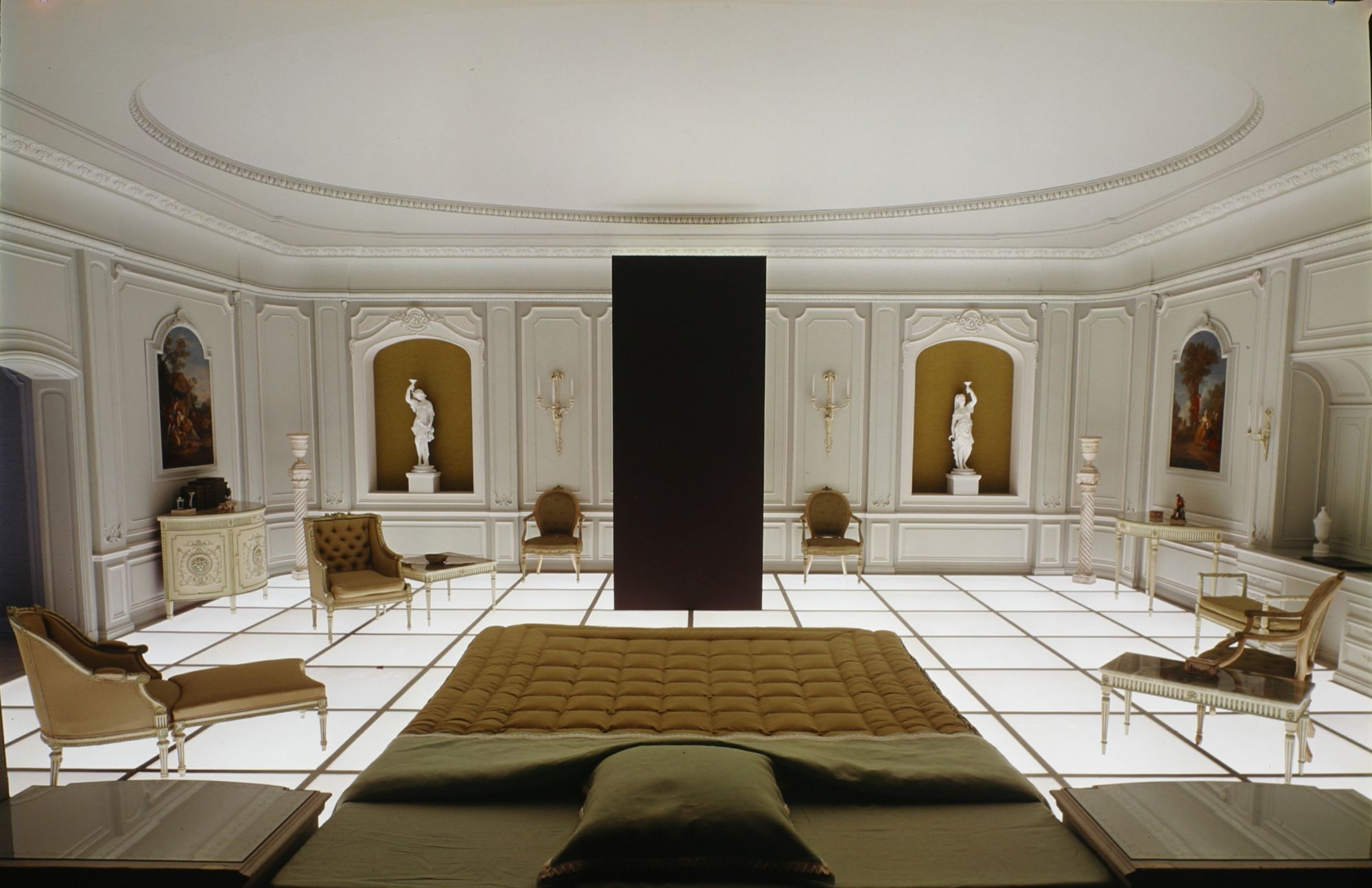
.jpg)
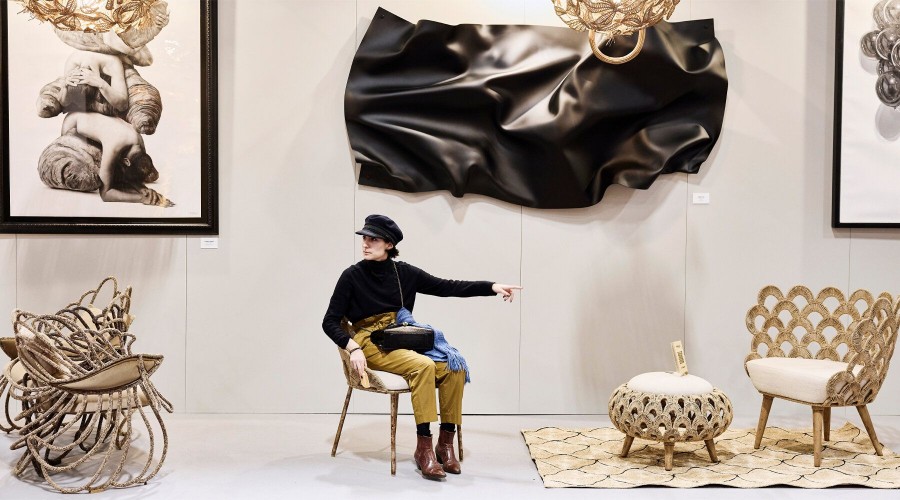
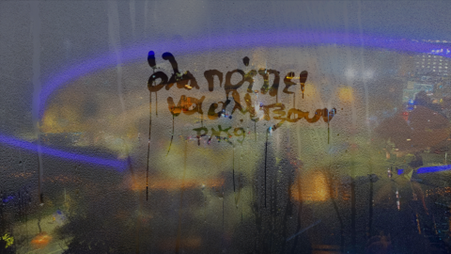
.jpeg)